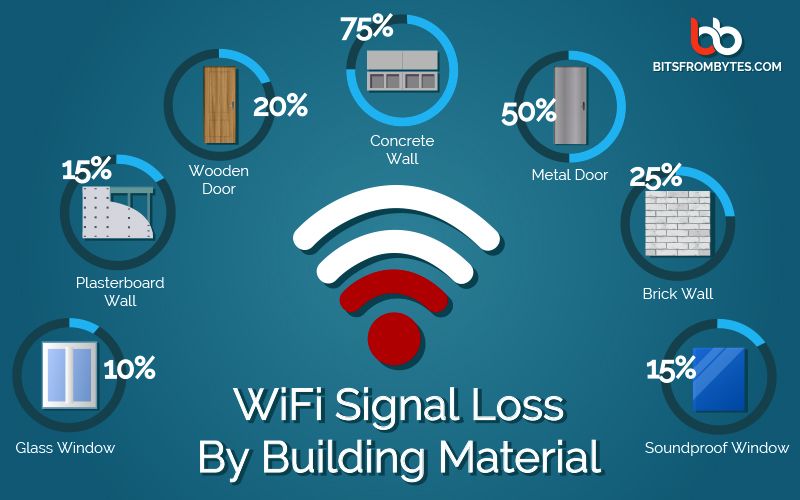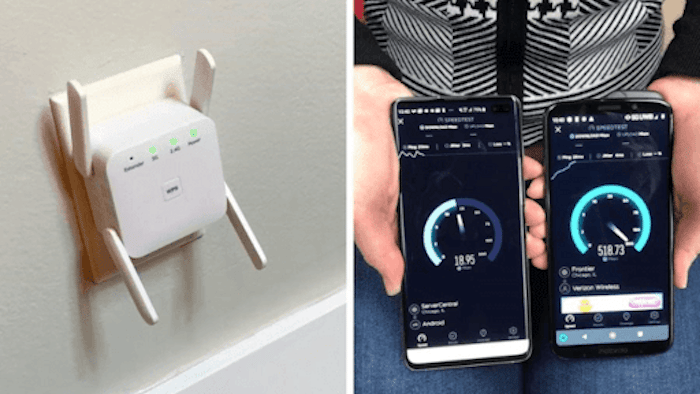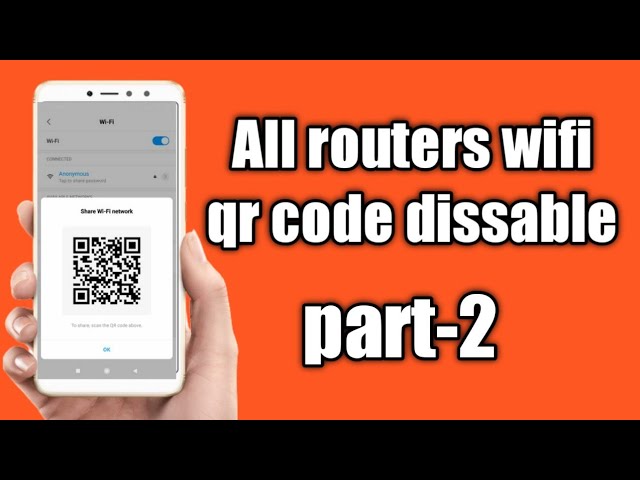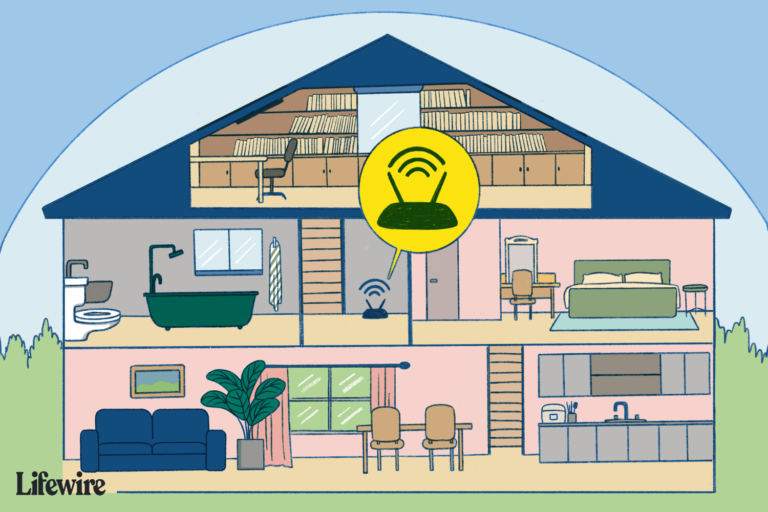What Disrupts Wi-Fi Signal?
Wi-Fi signals are a great way to access the internet, but they can be easily disrupted. Interference from other electronics, physical obstacles, and other signals can all cause your Wi-Fi signal to weaken or become unreliable. Understanding what disrupts Wi-Fi signal can help you troubleshoot and find solutions when your connection becomes unreliable. Common causes of interference include physical objects such as walls, furniture, and appliances; electronic devices such as microwaves, cordless phones, and Bluetooth speakers; and other Wi-Fi networks in the same area.
Common Causes of Wi-Fi Signal Disruption
Wi-Fi is the lifeblood of the modern home. But, it’s not always reliable, and signal disruption can be a major source of frustration. Many factors can affect your Wi-Fi signal, from physical obstructions and distance to interference from other devices and even the weather. Understanding the common causes of Wi-Fi signal disruption can help you identify and address issues quickly, making sure you get the most out of your network.
Physical obstructions are the most common cause of signal disruption, as walls, furniture, and other objects can block or weaken signals. In addition, the distance between your router and device affects signal strength—the further away you are, the worse your connection will be. Interference from other devices is also a major source of disruption. Other electronic items, such as cordless phones, baby monitors, and even microwaves can all interfere with your Wi-Fi signal. Finally, weather conditions can affect signal strength, with heavy rain or snowfall causing interference.
By understanding the common causes of Wi-Fi signal disruption, you can take steps to reduce or eliminate them. Moving your router closer to your device or relocating it to a higher spot in the house can help improve signal strength. You can also reduce interference by moving other electronic items away from the router and limiting the number of devices connected to the network. By taking these steps and understanding how disruption occurs, you can ensure that your Wi-Fi signal is always running smoothly.
Interference from Other Wireless Devices
Wi-Fi signals are vulnerable to interference from other wireless devices. These devices include baby monitors, Bluetooth speakers, cordless phones, and security cameras – all of which operate on the same frequency as your Wi-Fi signal. This can cause a disruption in the signal, resulting in slow speeds and dropped connections. To reduce the impact of interference from other wireless devices, you can adjust the channel on which your router operates and position your router away from other wireless devices. You can also use a Wi-Fi range extender to boost the signal in areas where other wireless devices are causing interference. Ultimately, reducing the amount of interference from other wireless devices can help improve the Wi-Fi signal in your home or office.
Impact of Physical Barriers on Wi-Fi Signal
Wi-Fi signals can be disrupted by physical barriers such as walls, ceilings, and other objects that may block the signal. This can be seen as interference, where the signal is weakened or completely blocked. This is why it is important to consider the physical environment when planning a Wi-Fi network. The materials used to build walls and ceilings, the thickness of the walls, and even the distance between the router and the devices can all have an impact on signal strength and quality. To avoid signal disruption, it is important to make sure that the router is placed in an open area, away from physical obstacles. Additionally, the use of signal boosters and antennas can also help to extend the reach of the Wi-Fi network.

Effect of Distance on Wi-Fi Signal Strength
When it comes to Wi-Fi signals, distance is an important factor in determining signal strength. The farther away you are from the Wi-Fi router, the weaker the signal will be. This is because the signal strength diminishes as it travels through the air. A Wi-Fi signal can travel up to about 100 meters before becoming too weak to be used. If you are further than this distance from your router, you will experience a weak or no signal. Additionally, obstacles like walls, furniture, and other electronics can further weaken the signal. To get the best Wi-Fi connection, make sure you are within the optimal range of the router and that there are no obstacles blocking the signal.
Troubleshooting Wi-Fi Signal Disruption
Wi-Fi signal disruption is a common issue for many people. Understanding the causes of disruption is key to resolving the problem. Common causes of Wi-Fi signal disruption can include physical obstacles, interference, or outdated hardware; all of which can result in poor signal quality. Taking the time to analyze the environment and the technology can help identify the source of the disruption and take the necessary steps to fixing it.
Physical obstacles such as walls and furniture can cause the Wi-Fi signal to become weak or spotty. As Wi-Fi signals are sensitive and can be easily blocked by objects, it is important to make sure that the router is placed in an open space and away from any physical barriers. Additionally, interference from other electronics can cause disruption. Wireless devices such as cordless phones, baby monitors, and microwaves can interfere with the Wi-Fi signal and cause it to become weak. It is recommended to keep these devices away from the router and to make sure that they are operating on a different frequency than the Wi-Fi signal. Lastly, outdated hardware such as routers, antennas, and other accessories can cause poor signal quality. If possible, it is recommended to upgrade the router and other hardware to the latest models to improve the signal.
By understanding the root cause of the disruption, people can take the necessary steps to troubleshoot and fix the Wi-Fi signal. Although it can be time-consuming and frustrating, being able to identify the source of disruption is crucial for resolving the issue.
Strategies for Improving Wi-Fi Signal
Wi-Fi has become an essential part of our lives. From streaming content to surfing the web, Wi-Fi is a must for most of us. But, there are times when the signal is disrupted due to several factors. Fortunately, there are several strategies you can employ to improve your Wi-Fi signal and ensure that you remain connected.
The first step is to identify the source of the disruption. This can be anything from physical obstructions like walls and furniture to electronic interference from microwaves and other devices. Once you are aware of the source, you can begin to look for solutions.
One of the most effective solutions is to invest in a higher-quality router. A better router can provide a more powerful signal, allowing you to get better coverage and faster speeds. Additionally, you can also look into purchasing additional access points to extend the range of your Wi-Fi network.
If your router is located in a central location, you can also consider investing in a Wi-Fi extender or repeater. These devices can help extend the range of your Wi-Fi network, allowing you to access the internet in more distant parts of your home.
In addition, you can also consider making adjustments to your router’s settings. Many routers have the ability to reduce signal transmission strength, which can help reduce the interference from other devices. Additionally, you can also adjust the channel your router is broadcasting on, as this can help reduce any interference.
Finally, you can also look into purchasing a wireless range extender. These devices help boost the signal from your router and can also help increase the range of your Wi-Fi network.
By following these strategies, you can improve your Wi-Fi signal and ensure that you remain connected and productive. With the right setup, you can enjoy the best Wi-Fi experience possible.
FAQs About the What Disrupts Wi-Fi Signal?
Q1: What causes my Wi-Fi signal to be disrupted?
A1: Common causes of Wi-Fi signal disruption can include physical obstructions such as walls or furniture, interference from other wireless devices, outdated or incompatible hardware, or changes in the environment such as a power outage.
Q2: How can I fix Wi-Fi signal disruption?
A2: To fix Wi-Fi signal disruption, you can try moving your router to a more central location, updating your router’s firmware, using a Wi-Fi extender, or adjusting the settings of any other wireless devices that may be causing interference.
Q3: How can I prevent Wi-Fi signal disruption?
A3: To prevent Wi-Fi signal disruption, you can minimize physical obstructions to the signal, make sure your router is properly updated and use an appropriate antenna, keep other wireless devices away from your router, and use a Wi-Fi extender if necessary.
Conclusion
In conclusion, there are a variety of factors that can disrupt a Wi-Fi signal, including physical obstructions, competing wireless networks, and interference from electronic devices. Each of these can cause a decrease in signal strength, leading to slower connection speeds and other issues. To ensure a reliable and fast connection, consider making changes to your router’s settings, improving the physical location of your router, and resolving any issues with neighboring wireless networks.



